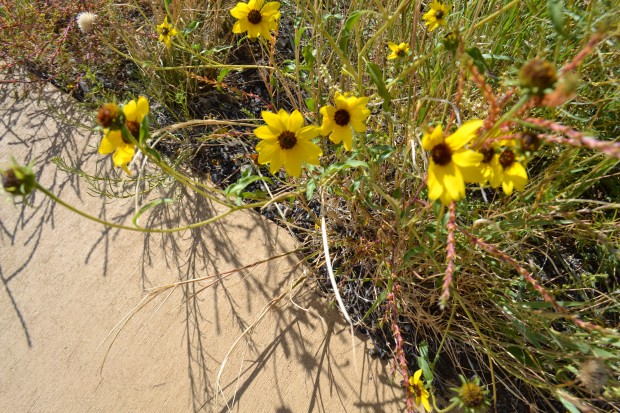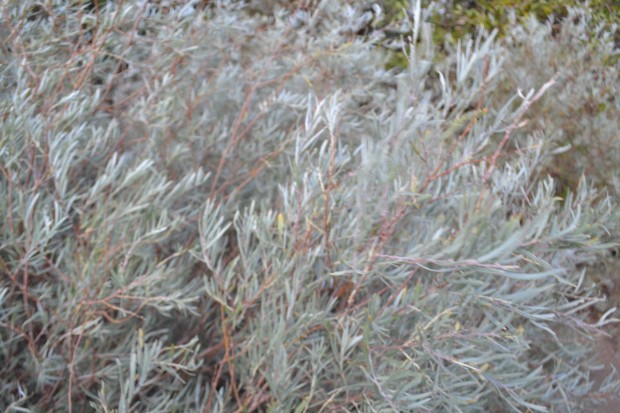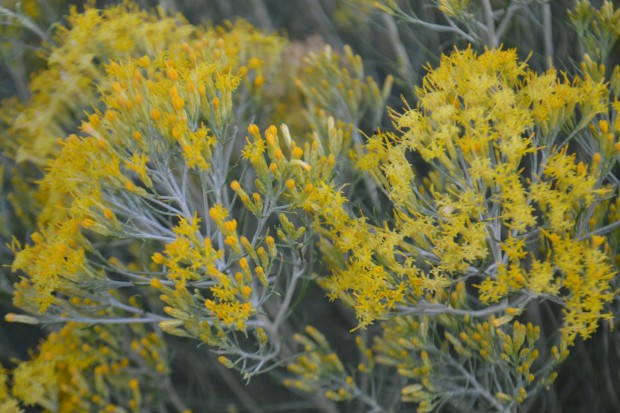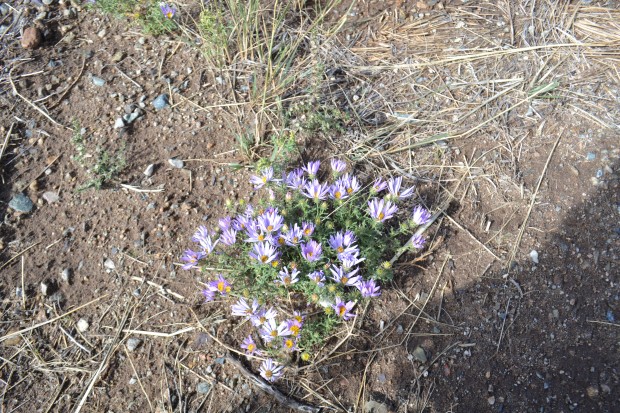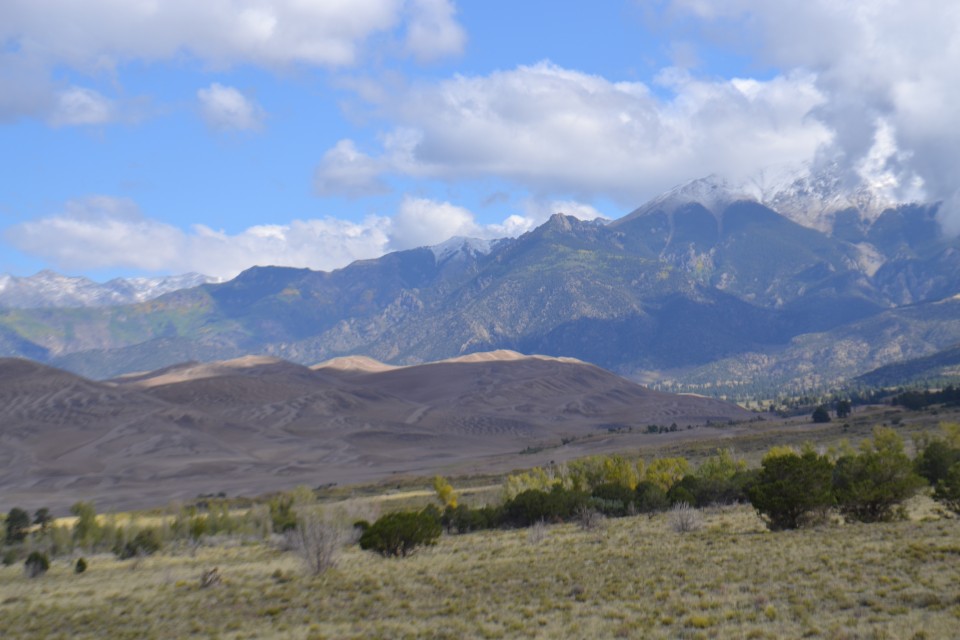
Colorado – 2012
We are on a road trip with dear friends Betty and Robert (Bob). They have been my friends since before I can remember. Hometown friends are some of the best friends, and Betty and Robert are great friends!
We are on an excursion to Colorado, and I am so excited. I have seen and experienced so much today that I do not know if I can get it all in one post.
We left Raton, New Mexico this morning with the clouds covering the top of the mountains. I’m here to tell you it was cold – 41 degrees cold. 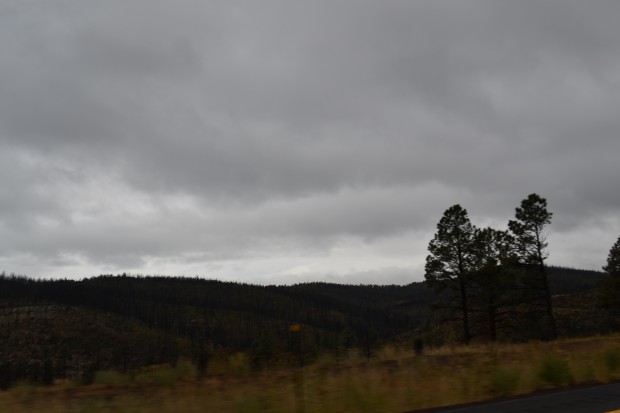 Along the road there were signs about the Great Sand Dunes National Park and Preserve. Robert and Betty had heard of them from a friend, so about 59 miles west of Walsenburg, Colorado we turned off US 160 onto Co 150. I think it was about 16 miles to the park entrance.
Along the road there were signs about the Great Sand Dunes National Park and Preserve. Robert and Betty had heard of them from a friend, so about 59 miles west of Walsenburg, Colorado we turned off US 160 onto Co 150. I think it was about 16 miles to the park entrance.
Be still my heart! Words can not begin to express the breathtaking magnitude of these sand dunes. 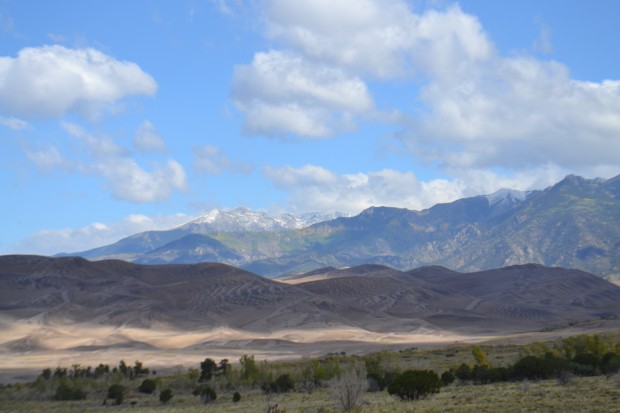 From the distance the Great Sand Dunes do not appear large compared to the 13,000 foot high peaks of the Sangre de Cristo Mountains in the distance. FYI: The San Juan Mountains form the other edge of the Great Sand Dunes.
From the distance the Great Sand Dunes do not appear large compared to the 13,000 foot high peaks of the Sangre de Cristo Mountains in the distance. FYI: The San Juan Mountains form the other edge of the Great Sand Dunes.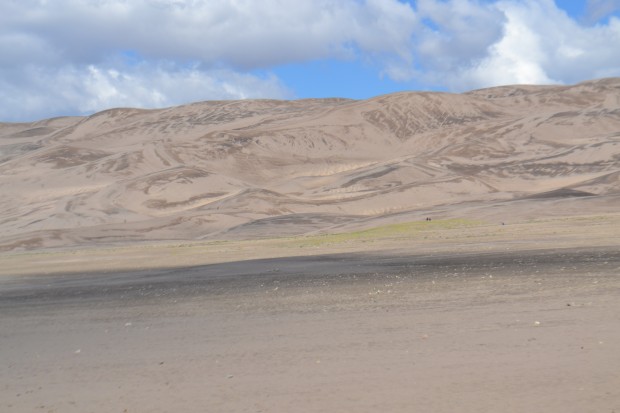 But this ocean of sand contains the tallest sand dunes in North America. At the tallest, they are 750 feet tall, and there is probably 350 more feet of sand under the San Lois Valley. They cover 330 square miles.
But this ocean of sand contains the tallest sand dunes in North America. At the tallest, they are 750 feet tall, and there is probably 350 more feet of sand under the San Lois Valley. They cover 330 square miles.
The reason the National Park is also a Preserve is that there are so many diverse life zones in this park. Stone zones include the treeless alpine tundra (above 11,000 feet), subalpine forest (9,500 to 11,500 feet), mountain forest and piñon-juniper woodlands (8,000 to about 9,500 feet. The sand zones include the dunefields, the sand sheet and grassland, and the sebkha (salt-encrusted plains punctuated by wetlands). The stream zone is formed from the Medano and Sand Creeks that create riparian (I don’t know what this means, but it was in the information, and I thought you were probably smarter than I am, and you would know.) and wetlands. This was probably too boring, but there are so many zones it is unbelievable.
First order of business was to visit the Visitor’s Center. There is a slow but good movie that helped explain the Great Sand Dunes. I highly recommend it. Long story short -When the snow melted off the mountains, water rushed down the mountains carrying sand. Sand was trapped in the valley between the mountain ranges. Wind blew the sand into dunes. That is way too simplified. But the bottom line is that the dunes are beyond impressive and beautiful.
You can hike and play on the dunes, but that was not within our abilities. I would love to be there at night. They say the stars are so bright. Camping is also available.
The plants in this desert land around the Visitor’s Center fascinated me. I am not sure of all the names, but I wanted to show you theses pictures of plants surviving in this desert area.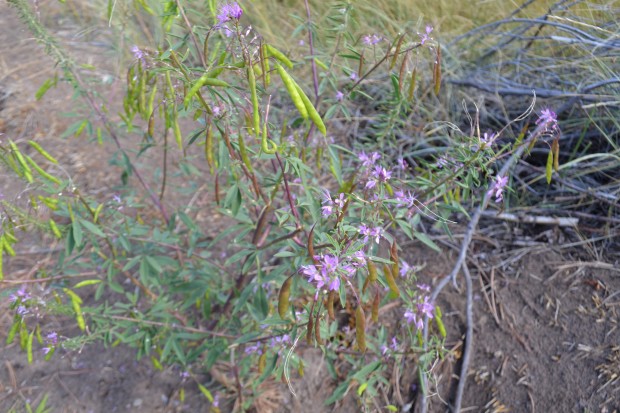
Today at the Great Sand Dunes I thought of this verse.
Romans 1:20 (NIV)
For since the creation of the world God’s invisible qualities – his eternal power and divine nature – have been clearly seen, being understood from what has been made, so that people are without excuse.
I saw God’s handiwork today, and I am glad I did.
Blessings to you and yours,
I am still getting use to my new computer, and couldn’t put a link in this post. To find out more about the Great Sand Dunes search Google. The National Park Service site, and the National Geographic site are both very good.

